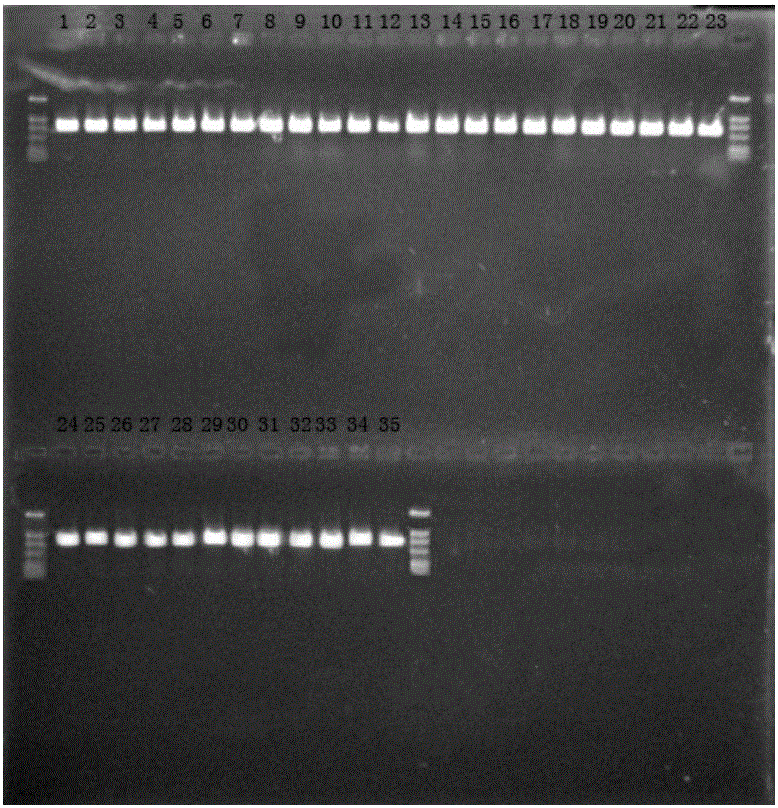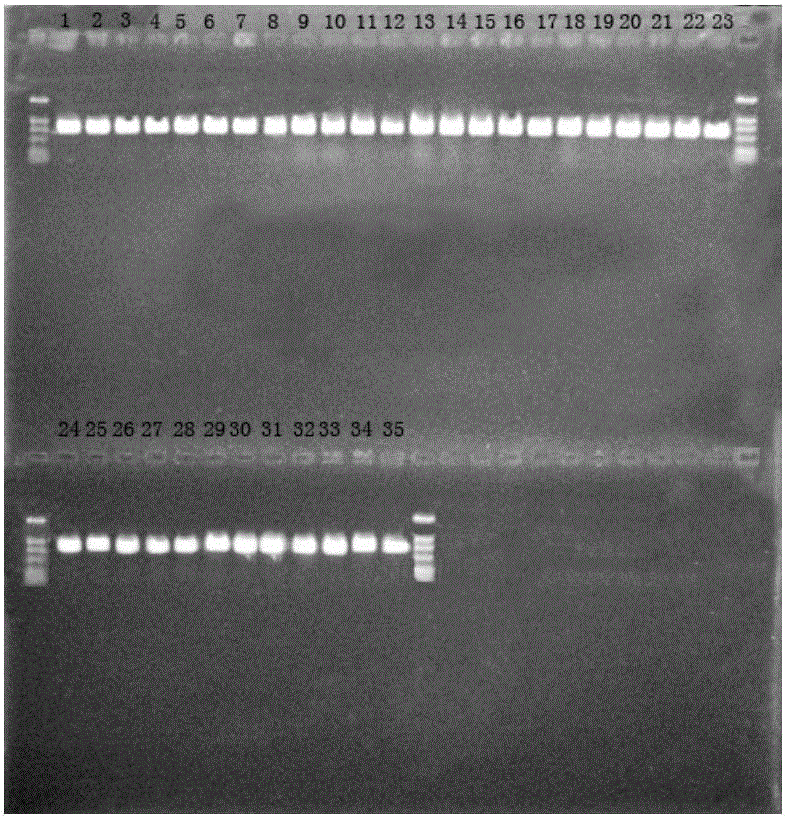Rapid source-tracking method of lactobacillus fermenti, combined sequences used for method, and construction method of combined sequences
A technology of Lactobacillus fermentum and construction method, which is applied in the field of rapid traceability of Lactobacillus fermentum, and can solve problems such as low efficiency, inability to ferment Lactobacillus isolate gene fragments, and a large amount of sequence comparison
- Summary
- Abstract
- Description
- Claims
- Application Information
AI Technical Summary
Problems solved by technology
Method used
Image
Examples
Embodiment 1
[0052] Activation and DNA extraction of embodiment 1 bacterial strain
[0053] Selected from the western region of Inner Mongolia, Shuanghe Town, Tuoketuo County, Hohhot City, Inner Mongolia, Yousuo Town, Eryuan County, Yunnan Province, Arixiyatu Sumu, Bulgan Province, Mongolia, and Bayinaobao Sumu, Kent Province, Mongolia. 35 strains of Lactobacillus fermentum were isolated from the collected samples of sour porridge, kumiss, lactic acid whey and yogurt. See Table 2 for the strain isolation information.
[0054] Table 2 Source information of Lactobacillus fermentum isolates
[0055]
[0056] Activate the strains separately: put the freeze-dried bacterial powder stored in the ampoule tube into skim milk to activate and rejuvenate (37°C, 24h), and perform microscopic examination on the bacterial liquid smear, and the microscopic examination results are Gram-positive Pure cultures were subcultured to the third generation.
[0057] Use liquid nitrogen freeze-thaw-CTAB method...
Embodiment 2
[0058] The construction of embodiment 2 joint sequence
[0059] 2.1 Design primers
[0060] Using the Lactobacillus fermentum F-6 genome (genbank number CP005958) as a template, starting from a large number of known housekeeping genes of Lactobacillus fermentum, through comparative genomics analysis results and the selection basis of housekeeping genes, it is considered that housekeeping genes must be It is closely related to core metabolism, and the selected genes should cover the entire genome as much as possible to more accurately reflect the evolutionary relationship between strains, and the distance between two adjacent housekeeping genes should not be too close to avoid genetic linkage. Influenced by this, the inventor finally selected 6 housekeeping genes related to the core metabolism of Lactobacillus fermentum, including dnaA, pyrG, rpoB, recA, dnaK and murC, as targets after many experiments. Primer Premier 5.0 software was used to design specific amplification prim...
Embodiment 3
[0073] Embodiment 3 builds developmental tree
[0074] The MEGA6.0 software package was used to analyze the combined sequence, and compared with Clustal W, the combined sequence of the 35 strains of bacteria isolated in Example 1 was compared in pairs, the distance between the sequences was calculated, and the distance matrix was constructed to reflect the various relationship between sequences.
[0075] Then construct a phylogenetic tree by constructing the neighbor-joining method (Neighour-joining, N-J) (see Figure 7 ).
[0076] Figure 7 The phylogenetic tree constructed based on the joint gene sequence of danA-pyrG-rpoB-recA-dnaK-murC can be seen that the phylogenetic tree constructed by 35 Lactobacillus fermentum strains is clearly divided into two branches, which are isolated from China It was composed of Lactobacillus fermentum isolates from Mongolia, and the results obtained were completely consistent with the collection source, indicating that the strains in the s...
PUM
 Login to View More
Login to View More Abstract
Description
Claims
Application Information
 Login to View More
Login to View More - R&D
- Intellectual Property
- Life Sciences
- Materials
- Tech Scout
- Unparalleled Data Quality
- Higher Quality Content
- 60% Fewer Hallucinations
Browse by: Latest US Patents, China's latest patents, Technical Efficacy Thesaurus, Application Domain, Technology Topic, Popular Technical Reports.
© 2025 PatSnap. All rights reserved.Legal|Privacy policy|Modern Slavery Act Transparency Statement|Sitemap|About US| Contact US: help@patsnap.com



